Botanical Dialogues: The Secret Language of Flowers Unveiled
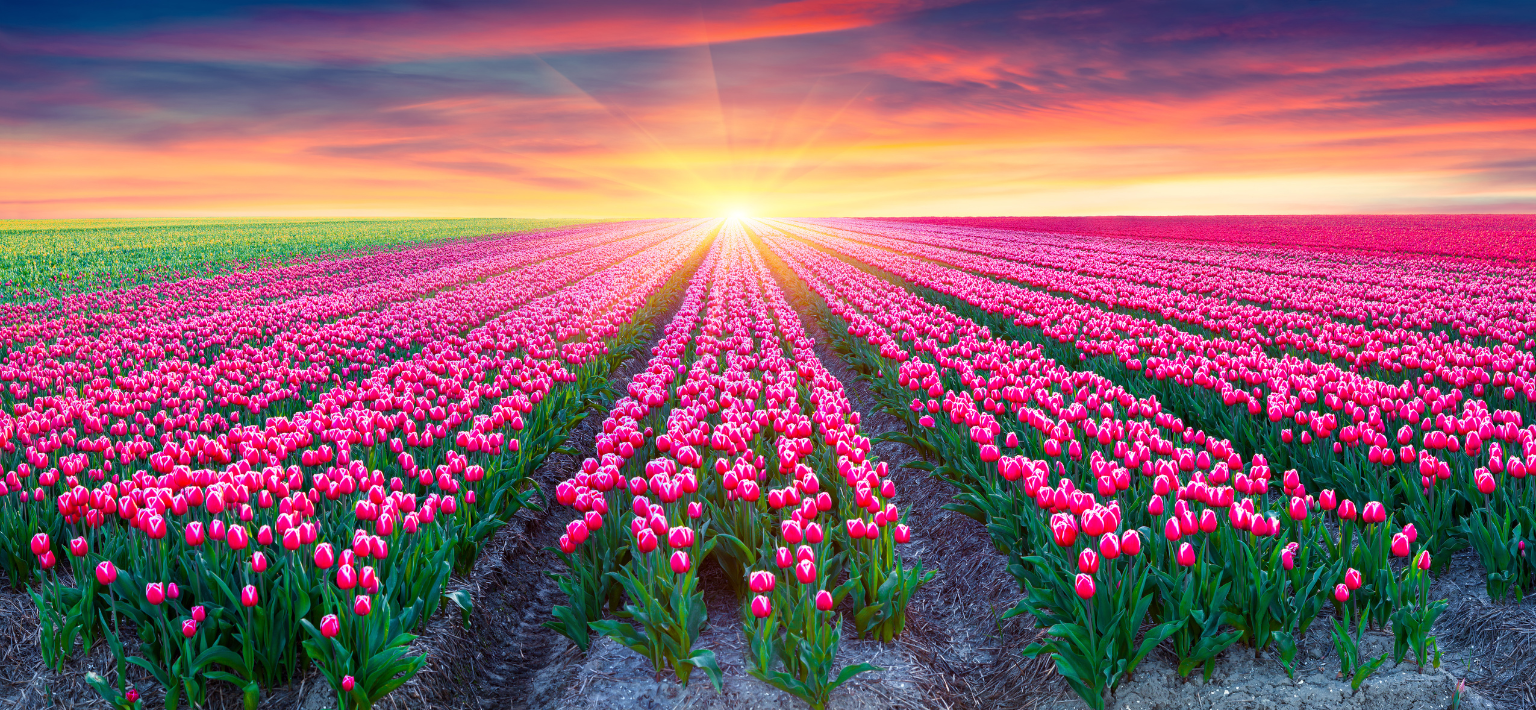
Updated On: April 04, 2024 by Raghda Elsabbagh
When we look at flowers, we see more than just pretty petals and leaves. They have the magic ability to communicate beyond words, carrying messages that transcend language barriers. This age-old practice of attaching meanings to flowers, known as floriography, has been around for a long time and has been an important aspect of human expression throughout various cultures and historical periods. The secret language of flowers has a fascinating history that shows how our ancestors used flowers to convey complex emotions and social cues.
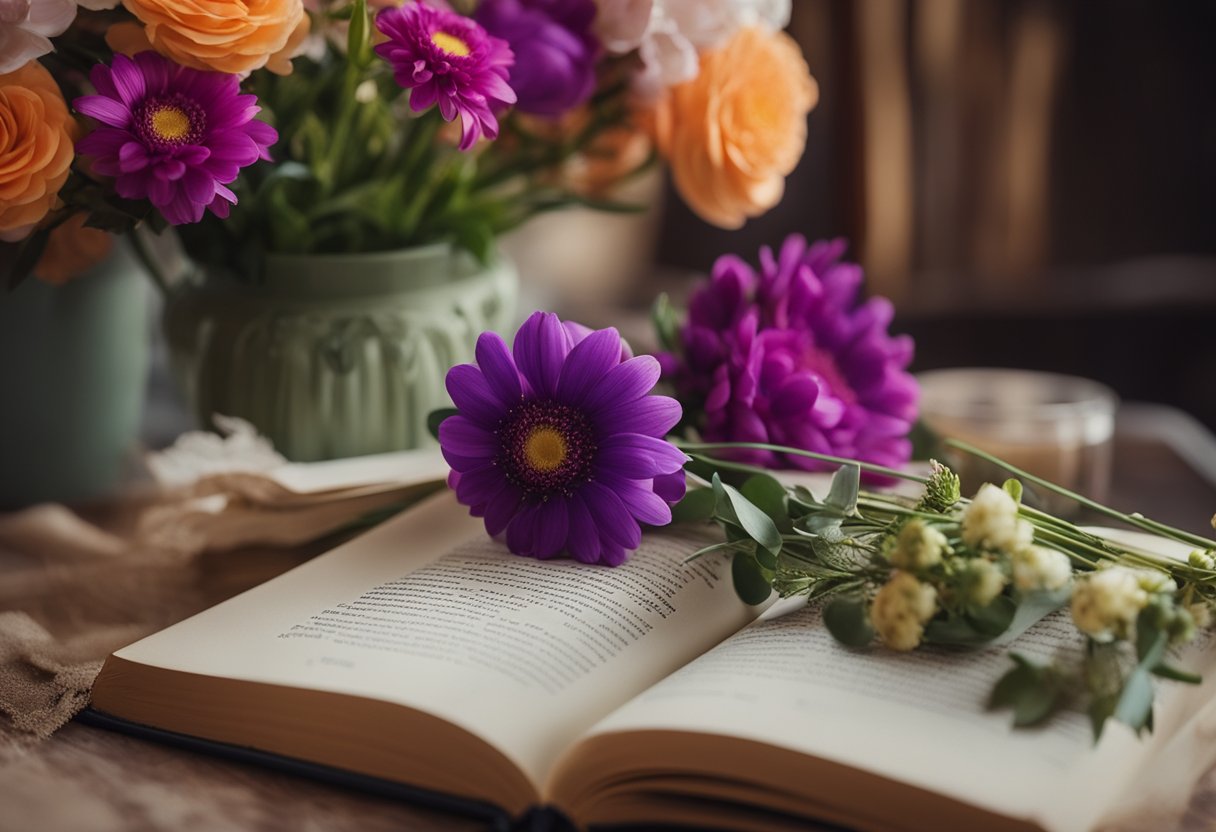
Even in the modern era, this unique way of communication continues to capture our imagination. Flowers come in different colours and shapes, each with a story and significance. We can use this language to express ourselves through flowers, connecting the historical past and present-day interactions. By understanding the meanings behind the arrangement of a bouquet, we can convey a narrative or sentiment just as powerfully as written words.
Table of Contents
Origins of Flower Language
The language of flowers has been around for centuries, with its roots tracing back to various ancient cultures. It has evolved over time, with the Victorian era significantly shaping how we interpret flowers today. We’ll explore the origins of flower language and how it has impacted us.
Ancient Cultures and Folklore
Throughout history, flowers have held symbolic importance across many civilisations. The Greeks, Romans, Chinese, and Egyptians all used floral symbols to represent their gods, beliefs, and emotions. For example, some myths speak of roses becoming red from Aphrodite’s tears and Adonis’s blood, showing the profound connection between flowers and the expression of feelings.
Floriography in the Victorian Era
In high society, expressing emotions was often discouraged or considered inappropriate during the Victorian era. As a result, people began to use flowers to communicate their feelings subtly and more sophisticatedly. This system, called floriography, became a popular means of silent communication.
People used blooms to send coded messages that could not be spoken aloud, and books deciphering this secret language became widely available. Each flower’s variety and hue conveyed a distinct message. This art was refined over centuries, particularly in the Middle East. This allowed individuals to partake in complex floral conversations regardless of social constraints. A carefully selected bouquet could speak volumes, from declarations of love to rebukes of disdain, evident in the era’s cultural practices.
Interpreting the Colours
Have you ever stopped to think about the meaning behind the colours of flowers? Floral hues can hold a lot of significance, and appreciating them can make us see flowers in a whole new light. Each colour has its own unique meaning, shaped by historical tradition and cultural nuances.
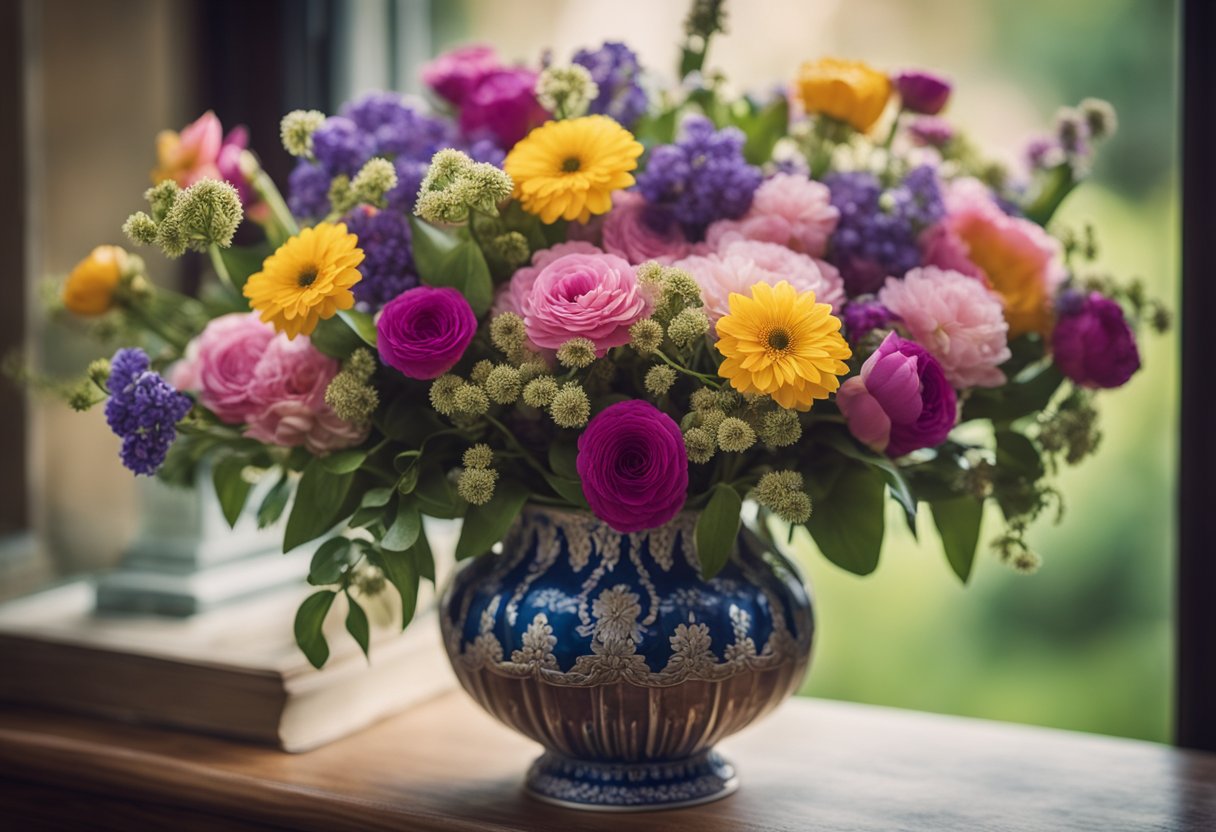
Red and Roses: From Love to Celebration
Take red, for example, which has long been associated with feelings of love and beauty. In the Victorian era, when people often kept their emotions to themselves, red flowers—especially roses—were used to express deep affection, romantic love, and enduring passion. But red might also celebrate achievement and symbolise sincere respect and courage, extending its significance beyond romantic expression.
White, Innocence and Remembrance
White, on the other hand, represents innocence and purity. With their serene appearance, flowers like lilies and roses remind us of new beginnings. They are often chosen for significant life events. Whitein bridal bouquets, for instance, represents pure intent. White blooms are also associated with remembrance, making them a common choice at memorials and services where we honour those who have passed.
By understanding the language of colours in floristry, we can connect with the sentiments and stories conveyed through flowers throughout history.
Symbolism in Society
Have you ever considered how flowers and plants hold symbolic meanings reflecting our emotions and cultural heritage? They are much more than just beautiful creations—they transcend mere aesthetics.
Plants in Mythology and Art
Plants have been integral to mythology, symbolising concepts from love to immortality. For example, the ancient Greeks deeply embedded the laurel tree within the myth of Daphne and Apollo, turning it into a symbol of triumph. Such tales have left a lasting impact, ensuring that even in modern artworks, references to these plants carry a narrative of historical significance.
Flowers as Social Tokens
Flowers speak a silent language understood across centuries as tokens of affection and celebration. Presenting someone with a bundle of lilies often signifies purity and renewal, while roses have long been symbolic of love—their colours whispering different depths of emotion. During the Victorian period, subtle communication was woven into the very fabric of society through these blossoms, allowing individuals to express feelings often left unspoken in conventional discourse.
Botanical Secrets
If you stop to think about plants’ healing powers and their secret meanings, you’d be surprised.
Medicinal Uses and Remedies
Herbal practices have been used for centuries as an integral part of human healthcare. For instance, Aloe vera is known for its ability to soothe burns and skin irritations. The gel extracted from its fleshy leaves, known to the Aztecs as the “burn plant,” is still widely used in modern skincare.
Tea tree oil, derived from the tea tree leaves, is another example of a plant that holds a special place in the pharmacopoeia for its antiseptic properties. It has proven effective in treating various skin conditions and is a key ingredient in many topical treatments.
Plants and Their Cryptic Messages
Plants also carry cryptic messages that have been attributed to them throughout history. Asters, known for their star-like flowers, symbolise wisdom and patience, possessing a charm that often alludes to our deeper, unspoken feelings.
The coneflower, or Echinacea, also carries its secret messages, often associated with strength and healing. It serves as a botanical whisper to remind us of our resilience in the face of adversity. These plants communicate in a language beyond words, revealing sentiments and connecting souls with their silent expressions.
The Role of the Language of Flowers in Personal Expression
Need help in expressing yourself? Flowers are your go-to! They are powerful symbols of our emotions and thoughts, allowing us to communicate complex feelings when words are not enough. Flowers can signify everything from deep devotion to profound grief, conveying messages with grace and beauty.
Courtship and Devotion
In the dance of courtship, flowers often play a starring role. A carefully chosen bouquet can speak volumes about our admiration and respect for the recipient. Each flower, with its own symbolism, tells a unique part of the story. For example, red roses have long been associated with deep love and passion. At the same time, pink blooms can denote a budding romance with their message of sweetness and poise.
Grief and Inspiration
In times of sorrow, flowers offer comfort and signify our sympathy. They can represent our grief, providing a visual expression of support and thoughtfulness. Lilies, often found in sympathy bouquets, symbolise the restored innocence of the departed’s soul. Simultaneously, flowers are frequently seen as sources of inspiration, blooming despite adversity and reminding us of resilience in life’s challenging moments.
Flower Meanings Across the Globe
What do different flowers mean and symbolise across different cultures and historical periods? It’s a fascinating subject that takes us on a journey through time and across the globe.
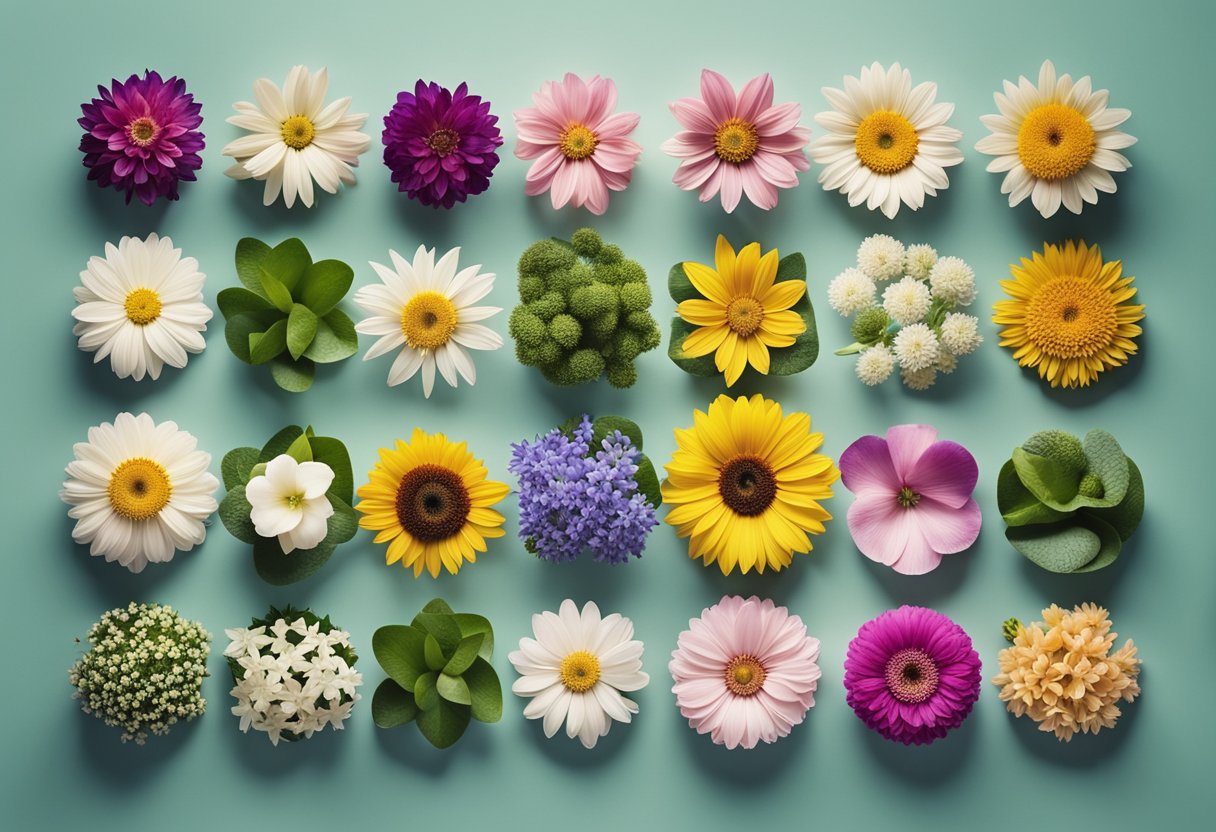
European Traditions
In Europe, the symbolic use of flowers can be traced back to ancient times. For instance, Roman mythology is steeped in stories where blooms such as roses and lilies represent deities and concepts like love and purity. Moving into the Victorian era, an intricate language of flowers evolved. Blossoms were assigned specific meanings used to convey messages, often of a romantic or secretive nature.
- Roses: Love and passion
- Ivy: Fidelity and friendship
- Violet: Modesty and faith
Significance in Eastern Cultures
The floral language in Eastern traditions can be quite distinct, drawing from religious beliefs and philosophies. One prime example is the lotus flower in Buddhism, signifying purity and enlightenment due to its ability to rise immaculately above murky waters. Across different points in history, Eastern cultures have consistently held flowers in high regard, utilising them to decorate temples and to celebrate various festivals.
- Lotus: Purity and spiritual enlightenment
- Chrysanthemum: Longevity and rejuvenation
- Peony: Richness and honour
In both these regions and beyond, the meaning of flowers continues to be a fascinating subject that reflects the intertwined nature of culture and history as symbols.
Seasonal and Special Occasion Florals
Flowers are not just pretty things to look at; they hold significant meanings that vary with the seasons and are particularly poignant during special occasions. Understanding the symbolism of such flowers can enhance our appreciation of these times.
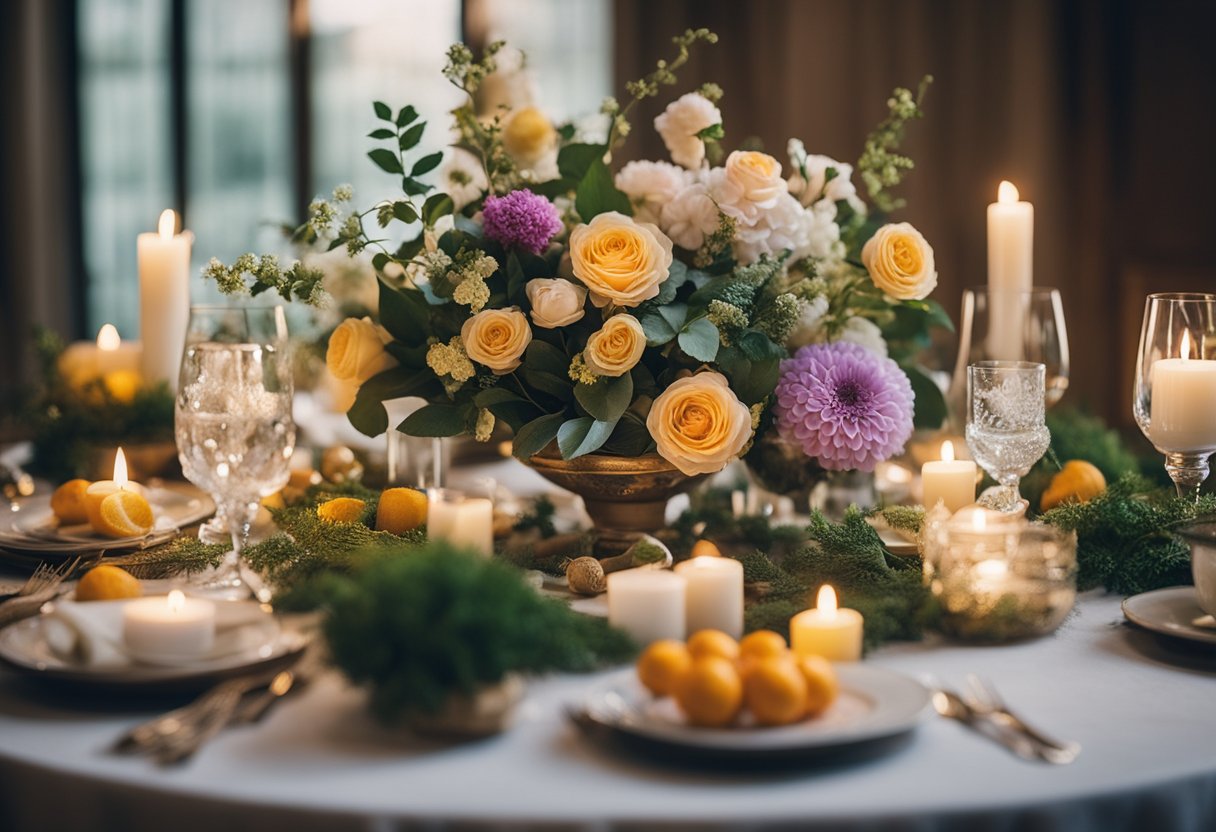
Symbolism Arranged by Season
Let’s take a look at the flowers arranged by season:
Spring: The season of rebirth is often marked by flowers that symbolise new beginnings, such as daffodils and tulips. Daffodils, with their bright yellow hue, signify the end of winter and the welcome of warmth and sunlight.
Summer: Abundant and varied, summer flowers reflect fullness and prosperity. Sunny sunflowers embody the summer spirit, conveying happiness and adoration.
Autumn: Rustic hues and hearty blooms characterise this season. Chrysanthemums become popular in autumn, symbolising joy and beauty despite the encroaching winter.
Winter: Even in the chill of winter, certain flowers persevere. With its robust green leaves and bright red berries, Holly represents hope and domestic happiness during this often stark season.
Festive and Memorial Flowers
Now, let’s talk about the festive and memorial flowers:
Celebratory Occasions: Flowers like the vivacious poinsettia are synonymous with festive times, especially Christmas. Their star-shaped leaf pattern is said to symbolise the Star of Bethlehem, making them a fitting choice for holiday arrangements.
Remembrance: Flowers play a significant role in times of remembrance. The use of poppies on Remembrance Day harks back to the battlefields after World War I, where they were among the first plants to bloom, symbolising the endurance of life and remembrance of the fallen. Through these natural symbols that fluctuate with the seasons and underscore our most poignant moments, we communicate shared sentiments and honour the cycles of nature and human life.
Flower Lexicon and Selection
This section will explore the art of choosing specific flowers for meaning and creating bouquets that communicate a desired message.
Guide to Individual Flowers
Sunflowers symbolise adoration, loyalty, and longevity. They are often given to convey a sense of warmth and happiness due to their resemblance to the sun. On the other hand, dahlias are associated with dignity and elegance, a sense of commitment, and a bond that lasts forever. Understanding these symbolic meanings of flowers can help you choose the proper bloom for the message you wish to convey.
Composing the Perfect Bouquet
But choosing flowers is not just about their meaning; it’s also about composing the perfect bouquet. The tradition of tussie-mussies, small bouquets filled with symbolic flora, dates back to Victorian times when they served as a means of cryptic communication. When composing a bouquet, we consider both aesthetics and the messages each flower embodies.
For a heartfelt message of devotion and cheerfulness, you might pair sunflowers with blue delphiniums for joy and red roses for love. Each flower, with its individual message, contributes to the overall sentiment of the bouquet.
Through carefully selecting flowers, we create more than just a visually stunning bouquet; we craft a silent yet profound statement.
Artistic and Cultural Impacts
Flowers have a secret language that has permeated artistic expressions and cultural practices throughout history. Flowers’ roles in literature and visual arts are particularly significant, as they have often carried symbolic meanings and shaped cultural narratives.
Flowers in Literature
In literature, flowers have been depicted as rich symbols, often carrying hidden messages. Shakespeare’s works are full of floral references, with each bloom elucidating characters and their emotions. The use of flowers to convey secret messages was especially prominent in the Victorian era, where an entire book, “The Language of Flowers,” served as an entertaining guide to decoding these botanical meanings. “Hamlet” sees Ophelia distributing flowers with significant meanings, rosemary for remembrance and pansies for thoughts, playing critical roles in unveiling subtexts within the play.
Floral Inspirations in Visual Arts
In the realm of visual arts, flowers have inspired countless artworks, from still-life paintings to elaborate tapestries. They add aesthetic value and often embody a more profound significance or message. The Dutch Golden Age saw painters imbue their canvases with flowers that had moralistic and vanitas themes. At the same time, lost masterpieces were often found to contain flowers symbolising life’s transience. The Pre-Raphaelite painters, with their detailed and vivid depictions of nature, frequently featured flowers to symbolise purity, beauty, or decay, contributing multi-layered meanings to their subjects.
Contemporary Flower Communication
Can’t say it? Bouquet it! Flowers have always been a powerful communication medium, carrying a rich tapestry of meanings that has evolved with time, incorporating modern sensibilities and personal touches.
Modern Interpretation of Flower Language
In today’s digital age, flowers remain a compelling method of expressing sentiments where words may fall short. The secret language of flowers has been used for centuries to convey deep emotions, and it continues to be relevant even today.
The colour of flowers plays an essential role in their contemporary language. For example, roses symbolise love, but their colours can vary the message. Red signifies passion, white for purity, and yellow for friendship.
Personalisation has also come to the fore, with individuals assigning their unique meanings to different blooms. This is especially evident in custom-made bouquets, where choices reflect not just the traditional language of flowers but also a shared history or an inside joke between the giver and the receiver.
Personalisation and Nonfiction Works
Several nonfiction works have sought to demystify the meanings behind flowers, such as The Secret Language of Flowers. This DK-authored hardcover compels us to discover new dimensions of flora’s historical and cultural significance. It underscores the shift from a standard set of meanings to a more personalised approach in contemporary flower communication.
Gifting flowers has become a deeply personal act, with givers often selecting blossoms that convey a bespoke sentiment tailored to the recipient’s experiences, tastes, or the nature of the relationship. The power of discovery in floral language allows for a continuation of tradition and a creative and intimate layer of communication.
Through works like those published by DK, we gain insight into how the language of flowers is both a historical tradition and a modern tool for expression, brimming with the potential for personalisation.
What Methods Were Historically Used to Create and Interpret Floral Messages?
Historically, individuals crafted messages by selecting flowers based on a commonly understood compendium of meanings. They would then arrange these flowers in a specific manner to craft a message, which the recipient would interpret using their knowledge of floriography.
Nurturing and Growing
When we delve into the nurturing and growing of plants, we touch upon a vital aspect of both the botanical world and our human experience. Caring for plants is more than a simple act of cultivation; it’s an expression of affection that ties us to the natural world.
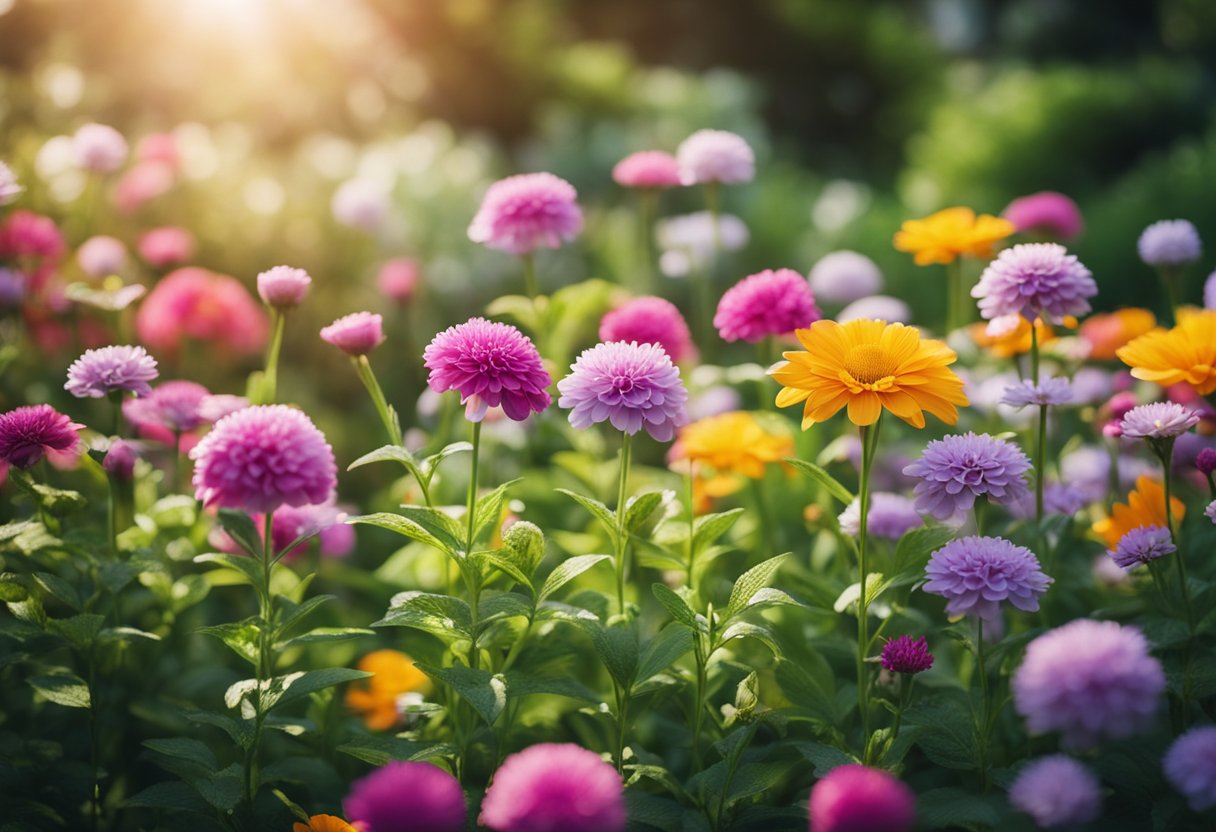
Cultivation begins with understanding the unique needs of each plant. Botanic care involves several crucial steps to ensure healthy growth:
Soil Preparation:
- Ensure proper soil pH to match plant requirements
- Enrich with organic matter for nutrients
Watering Regimen:
- Water according to each plant’s specific needs
- Avoid overwatering to prevent root rot
Sunlight Exposure:
- Provide adequate light but protect from harsh direct sunlight
Nutrition:
- Fertilise properly during the growing phase
Pruning and Maintenance:
- Regularly remove dead or diseased growth
- Support plants with staking or trellising as needed
Taking care of your garden plays a crucial role in helping it flourish. The unspoken communication we cultivate with our plants through attentive gardening reflects the quiet yet powerful ways we show care and affection to the people in our lives. This dance between tending to plants and expressing human emotions shows that the small, nurturing gestures we make have significant impacts, enhancing our surroundings and strengthening our bond with the earth.






